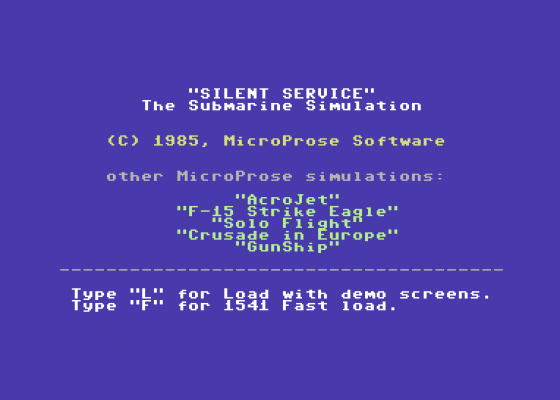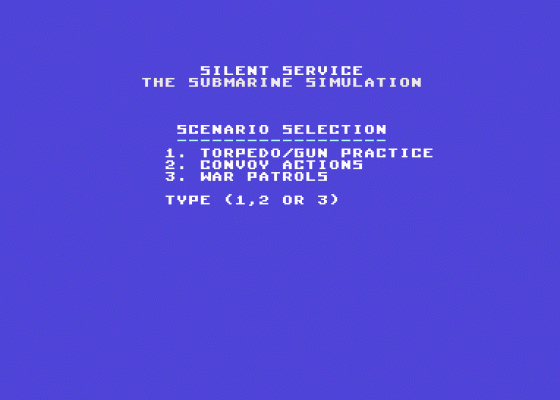
Zzap
 1st May 1986
1st May 1986
Categories: Review: Software
Publisher: Microprose
Machine: Commodore 64
Published in Zzap #13
Silent Service
Silent Service is the latest in simulations from one of the most respected companies in the field. This one however, is not just another Flight Simulator variant. Instead, you take the part of the captain of a US Navy submarine commander in the South Pacific during the second world war. The game comes in a medium sized box, complete with instruction booklet and the game itself.
The instruction booklet is a work of art. At fifty pages long, it covers the aims and limitations of the simulation, detailed introduction and instruction on use, pertinent military history from the point of view of WWII Naval research and combat from American and Japanese points of view, a plethora of varied scenarios and tactical advice for novices and experts alike. The presentation is spot on.
Once the parameters of play have been selected, the screen shows the figure of the captain in the conning tower. His default position is at the periscope. By moving the joystick, the figure moves to a different area of the tower. A press of the fire button confirms the move and so selects a new screen with different instructions. Selecting the periscope only works when surfaced (which you practically have to be anyway) and it gives you a view of your immediate surroundings. Moving the joystick left and right allows panning. On the game's lower levels you have a targeting computer so that any surface vessel that enters the centre of the sights highlights a marker. If a torpedo is fired at this point it should hit, provided that extreme evasive action is not taken by the enemy. Below the viewing area is all the information about range, heading and so forth of the current target.
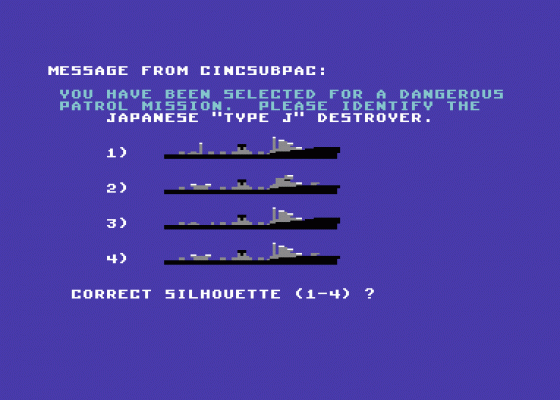
Moving right in the tower shows the map screen. This combines sonar and radar to show your current position and that of any vessels and active torpedoes. Heading, speed and depth are displayed at the bottom of the screen and these may all be changed from here. Moving down and right is the quartermaster's log which displays your accomplishments so far in this mission. Moving the joystick straight down takes you to the damage report screen. Two profiles of the submarine are displayed (one solid and one cutaway) with any damaged areas highlighted accordingly.
Moving left in the tower takes you to the gauges screen. The status of the submarine is best monitored and adjusted from here. Apart from the fact that this screen displays all the mechanical data about your vessel, a nice touch is that the whole thing is extremely well drawn, with pipes and buttons giving an almost 'ordered chaos' look to the screen. Moving up from the bridge gives you a binocular option (only available when surfaced), and moving down and right selects the continue patrol option which is normally selected after a successful engagement.
Apart from being able to practise at just running the sub and taking part in simple engagements, there are scenarios of varying complexity. As these are set at different times during the war, details such as the modification of torpedoes and capabilities of both your vessel and those of the enemy are taken into account. This means that some of your torpedoes may he duds (a problem which plagued American sub forces until late in the war). Alternatively, you may be able to take the sub to greater depths, while the Japanese escorts may be better equipped in terms of radar or use different hunting techniques.
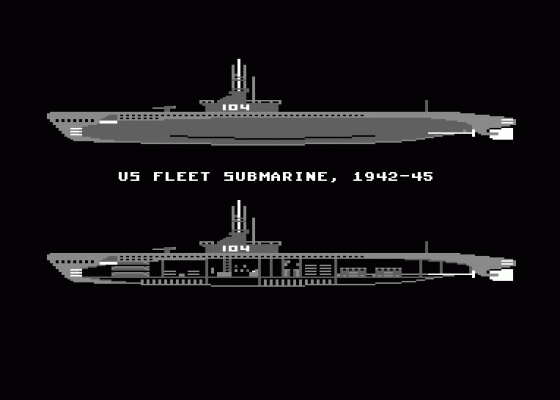
The simulation makes effective use of sound to let you know when certain things have occurred. One of the best examples of this is the firing of a torpedo. One minute everything is quiet, but a couple of seconds after the torpedo has been fired, a dull boom followed by a whooshing sound effectively gives the impression of the power of the weapon. If the launch was monitored from the periscope, the torpedo can be seen homing in on its target. Which brings me to the point about graphics. Simulations of this type often need little in the way of graphics, but those employed by this game are of a very high standard indeed.
Unless you read the histories at the back of the instruction booklet, much of the significance of the simulation is likely to elude you. The author, Sid Meier (Decision in the Desert and Crusade in Europe) has taken his work very seriously and done the necessary research. It has paid off. Apart from the professional look and feel of the game, the atmosphere created is one of tension and excitement. An option which I neglected to mention earlier is the use of the deck gun. Submarine deck guns were not fitted with elaborate aiming mechanisms because they were rarely used. No submarine commander in his right mind would consider taking on even the smallest destroyer, as the sub would inevitably lose the engagement. But the guns were fitted just in case and this simulation caters for them. Firing the gun requires that a few ranging shots be made. Don't make a habit of using it, though. It won't win many battles.
Game parameters include the intelligence of the enemy destroyers, limited visibility, whether or not the angle-on-bow needs to be input (a vital part of manual torpedo aiming). They allow sophisticated modification to any scenario.
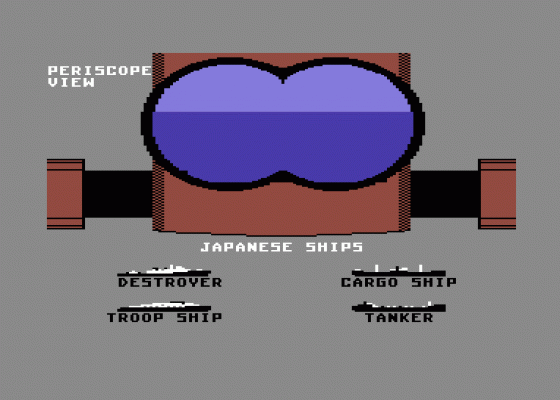
The simulation has been extremely well thought out and does not appear to be flawed in any considerable respect. The campaigns are exciting and develop well as the player becomes more accustomed to the program. The main question must be how much will a submarine simulation capture people's imaginations, regardless of how well it has been implemented? I cannot help but feel that the game will have a somewhat limited appeal. However, if you have an open mind and want a challenging piece of software, then I cannot recommend this product highly enough.
Verdict
Presentation 89%
Excellent packaging and on screen options provide varied games that should last a long time.
Graphics 88%
Of a very high standard for the type of game.
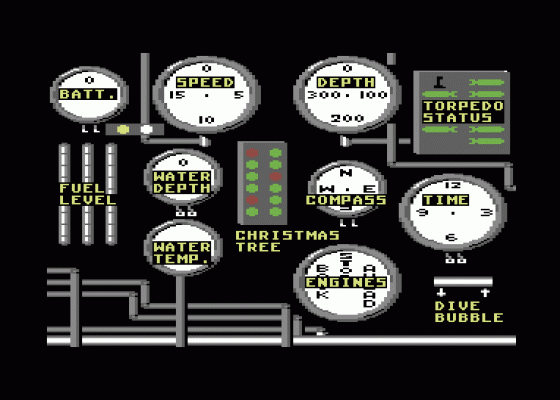
Instructions 95%
Progress logically and the notes at the back make fascinating reading.
Authenticity 92%
The attention to detail is excellent.
Playability 86%
Difficult until the controls are mastered and as this is a simulation, mastering the controls is not the easiest of tasks...
Value For Money 87%
Going rate for good simulations.
Overall 88%
May have limited appeal but otherwise excellent in every respect.
Other Reviews Of Silent Service For The Commodore 64
Silent Service (US Gold/Microprose)
A review
Silent Service (Microprose)
A review
Silent Service (Microprose)
A review
Silent Service (MicroProse)
A review by Mike Pattenden (Commodore User)



